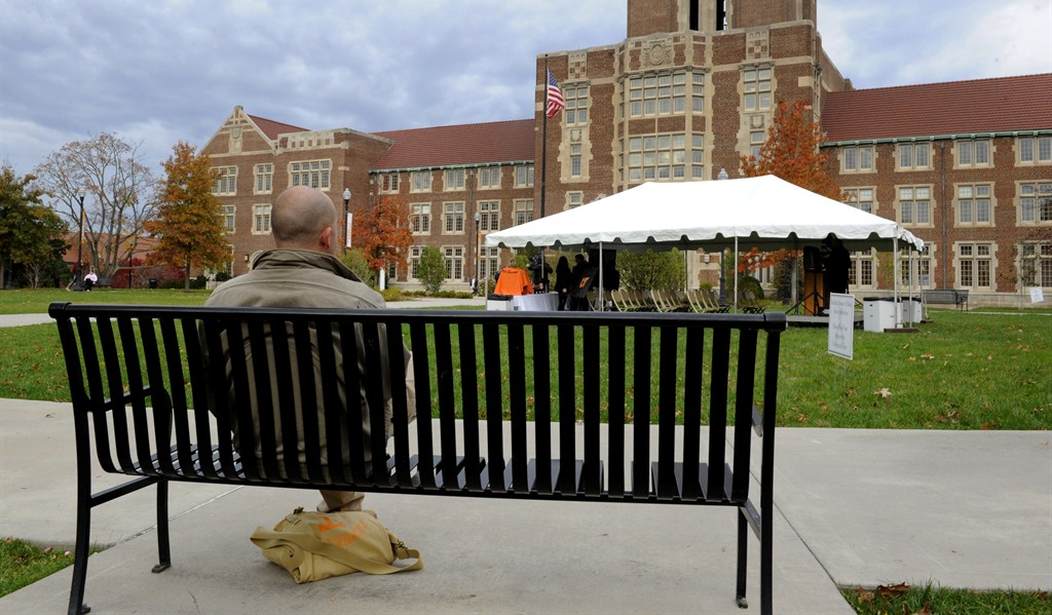A new Washington Post-ABC News poll finds that a whopping 76 percent of Americans are opposed to race-based college admissions. This comes with a Supreme Court case looming in which the Court could strike down such practices.
Three quarters of Americans, 76 percent, oppose allowing universities to consider race when selecting students, the key element in affirmative-action programs in universities nationwide. A decade ago, the high court approved racial considerations at the University of Michigan Law School but struck down an undergraduate admissions policy that awarded extra points to minority applicants. This year, the court is deciding whether the University of Texas at Austin’s admissions policy — which allows administrators to consider race in admitting about one-quarter of the freshman class — is constitutional.
Affirmative action programs have long been unpopular. But to see such overwhelming disapproval for a policy that’s almost uniform among America’s universities – and most virulent among those considered “elite” – is a (pleasant) surprise.
The truth is that affirmative action in college admissions has done more to perpetuate racial antagonism among America’s young people than almost anything else. Injustice – and that’s what affirmative action by definition is – naturally provokes outrage in those who recognize and are affected by it. The problem becomes particularly acute when you throw in outrageous tuition costs and finite financial aid resources.
Picture this – you’re a student at an expensive university whose family financial status disqualifies you from need-based aid (and believe me, you don’t have to be Bill Gates, Jr. for this to happen). You see many of your peers, fellow students no smarter than you, going to school for free while your parents ravish their savings, and you take on massive loans, to finance the exorbitant costs of higher education. With affirmative action in the mix, race and economic status are conflated, and we’ve got one nasty recipe for resentment.
Recommended
At an “elite” university, most tend to assume that white students are wealthy and that minorities are poor and have benefited from affirmative action. This is a gross mischaracterization – there are plenty of poor whites and plenty of minorities who really did gain admittance on the merits – but it’s one that pervades today’s campuses. I can imagine little worse than being a minority student who has scratched and clawed his way into a good school while others assume he didn’t really earn it. On the other end of the spectrum, it’s no charity to admit students incapable of meeting a university’s academic standards. Thanks to affirmative action, crowds of students find themselves in this disheartening situation – no matter how many hours they spend holed up in the library, no matter how many parties they skip, they simply cannot measure up. This all makes for an environment in which racial tensions, simmering angrily beneath the surface but whitewashed by university institutions, can only be voiced in private or anonymously (see this year’s college confessions craze).
Of course, the biggest losers of all are Asians and middle to lower-class whites. Ross Douthat of the New York Times notes this is his incisive April 6 column:
…it would be like telling admissions offices at elite schools that they should seek a form of student-body “diversity” that’s mostly cosmetic, designed to flatter multicultural sensibilities without threatening existing hierarchies all that much…The “holistic” approach to admissions, which privileges résumé-padding and extracurriculars over raw test scores or G.P.A.’s, has two major consequences: It enforces what looks suspiciously like de facto discrimination against Asian applicants with high SAT scores, while disadvantaging talented kids — often white and working class and geographically dispersed — who don’t grow up in elite enclaves with parents and friends who understand the system. The result is an upper class that looks superficially like America, but mostly reproduces the previous generation’s elite.
All in all, public opposition to this perverse and widespread practice is great news. Merit is the fairest, most sensible, and most moral method for admitting students of all races. Now let’s hope the Court holds with the rest of the country and strikes down race-based college admissions.
























Join the conversation as a VIP Member